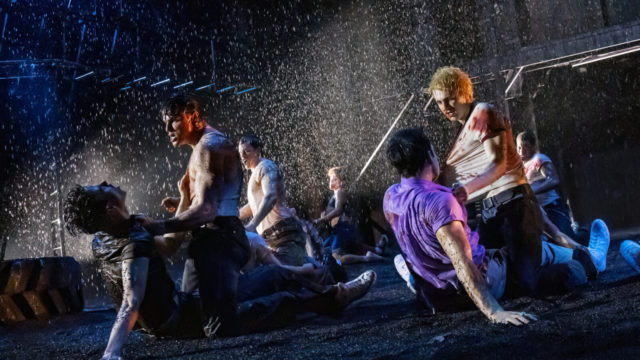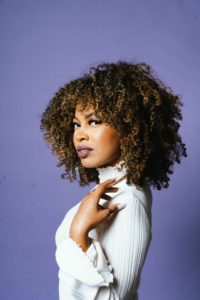Hana Kim will be keeping Ponyboy golden at the 2024 Tony Awards.
The alumnus, who earned her MFA in scenic design, received a Tony Award nomination alongside Brian MacDevitt for Best Lighting Design of a Musical for her work on the stage adaptation of S.E. Hinton’s “The Outsiders.” As the projection designer, Kim used moving and still images to create an emotional landscape to transform the storytelling.
Kim spoke with the Daily Bruin’s Gavin Meichelbock about how she used projection to bring an iconic piece of American literature to the theatrical stage.
This interview has been edited for length and clarity.
[Related: Q&A: Tony-nominated UCLA professor talks lighting design for ‘Camelot’, industry values]
Daily Bruin: What was your experience with the source material before you started working on the musical?
Hana Kim: I wasn’t really familiar with it growing up. So when I heard about the musical, that was the first time I was hearing about the story, but I think that actually helped me get into it with a fresh perspective. Once I got the job, I read the original book and then watched the Francis Ford Coppola movie. It was great to get to know one of the classic literary materials that is very American.
DB: Are there any scenes from the novel that stuck out to you that you translated to the stage?
HK: The director and the crew all came together and said the videos should be from Ponyboy’s point of view. We were really focusing on how he would perceive the world. For example, he goes to the drive-in theater, and rather than telling the audience we’re in a movie theater by giving realistic information, I used damaged film rolls to create that frantic energy. To Ponyboy, the drive-in theater is full of sexual energy and teenage angst. I was trying to capture that with the movement rather than giving an idea of a realistic location.
DB: The opening and closing line of the novel features Ponyboy going into the bright sunlight from the darkness of the movie house. How did you capture this important scene in the play?
HK: We used parts of the “Cool Hand Luke” footage, the movie he’s seeing, but we tried to also open the door that’s like, “Hey, it’s not about information.” The feeling is very important in the whole show. I created an artwork that is heavily inspired by the original cover of the original book. It already looks like it’s drawn by a teenager, but I kind of made it a little more clear that it’s drawn by a teenager. It’s a pre-show image when you walk in the theater, then we go into introducing Ponyboy’s brothers, and then go to the “Cool Hand Luke” footage.
DB: The climax of “The Outsiders” is Ponyboy and Johnny rescuing children from a burning church. How did you bring this pivotal scene to life?
HK: I used burning film material. We’re seeing the actual celluloid getting burned and morphed into something to capture that emotional quality, rather than, “Here’s video of a fire.” It’s all about the texture of celluloid burning.
DB: One of the most famous lines in “The Outsiders” is Johnny saying, “Stay gold, Ponyboy.” How did you apply this motif of gold into the projection designs throughout the show?
HK: I was actually focusing on Ponyboy’s point of view that is evolving. I tried not to give away the “stay gold” as a key motif because, in a way, it has to come as a surprise at the end. We were pretty strategic about using the color gold so it feels special.
[Related: Q&A: Alumnus Paul Whitaker discusses lighting designer role on ‘Alice in Wonderland’]
DB: Another recurring color in “The Outsiders” is red, such as Cherry’s red hair, blood from wounds and the fire in the climax of the story. Where does the color red make an appearance in the projections? What does it symbolize?
HK: That’s another thing we were very strategic about. We didn’t want to use it in any other scene but the scenes that really needed it. The first time we register red is right after the stabbing scene. We tried to avoid using red in the stabbing scene because we felt if we used it there, it might become a cliche. The shock of stabbing and that moment is not really about the blood, that moment is when their tragedy happens, so it was kept pretty stark and cool. Then once they start running away, that’s when we see the red. It’s more of an afterwards thing, rather than in the moment of stabbing. That through line continues later with the fire sequences. We were very conscious about not using red overtly in other scenes.
DB: What do you think stands out about the work of the projection and lighting that garnered its Tony nomination?
HK: I think it goes back to that original concept. We were trying to really lean into this emotional state a teenager can be going through. I think we were successful in creating the world where we can be with Ponyboy, going through things with him and therefore maximizing that specific period of time everybody went through. We all can sympathize and practice empathy with him.





Comments are closed.